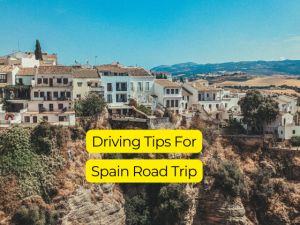
Driving Tips for Your Spain Road Trip
Estimated reading time: 8 minutes
Spain has long been at the top of my list of European destinations, and there’s no better way to experience its charm than on a road trip through Spain. Just imagine cruising along the sun-soaked beaches of Costa del Sol, savouring the lush vineyards of La Rioja, and marvelling at the dramatic Pyrenees mountains—all at your own pace. All you need is a well-planned road trip to Spain
But before you hit the road, it’s important to know that driving in Spain comes with its own unique set of rules and quirks. These might be a bit different from what you’re used to back home. To help you navigate these differences and make the most of your Spanish road trip, I’m sharing essential tips for driving in Spain based on my own experience during a two-week road trip across Spain. Keep an eye out for pro-tips scattered across this blog.
1. Do I need an International Driving Permit (IDP) to drive in Spain?
International visitors from non-EU countries may need an International Driving Permit (IDP), depending on the agreement between Spain and your home country. Indian licence holders need an International Driving Permit (IDP) to drive in Spain.
2. Familiarise Yourself with Spanish Traffic Laws
The absolute first step and the most important. Basic traffic laws in Spain that you must know when planning your Spanish road trip:
- In Spain, like most of Europe, you drive on the right-hand side of the road. While you overtake on the left.
- The minimum driving age is 18, and you’ll need a valid driver’s licence.
- Wearing seatbelts is mandatory for all passengers, and children under 12 or shorter than 135 cm must use a car seat or booster.
- Using a mobile phone while driving is illegal unless you have a hands-free system.
Spanish drivers often flash their headlights to signal that they’re about to overtake or as a warning of an upcoming hazard. Honking is typically used to express frustration or alert someone of danger. Use it sparingly to avoid misunderstandings.
On highways, it’s customary to stick to the right unless overtaking. Staying in the left lane unnecessarily can lead to frustration from faster drivers.
3. What documents do I need to carry when driving in Spain?
- Driver’s licence
- Passport or ID
- Vehicle registration papers
- Proof of insurance
- International Driving Permit (if required)
- Rental agreement (if driving a rental car)
4. Renting a Car in Spain
Renting a car can be the best way to explore Spain’s diverse regions. And most importantly it is the cheapest place to rent a car in all of Europe! So if you’ve been thinking of taking a road trip in Europe, Spain has got to be the first one on the list.
I recommend renting a car from either Discover Cars or AutoEruope. Basic insurance is included with most rentals, but consider purchasing additional coverage for peace of mind, especially if you plan on driving in rural areas or long distances.
5. What are the speed limits in Spain?
The speed limits are typically 120 km/h on highways (autopistas and autovías), 90 km/h on main roads (carreteras), 50 km/h in urban areas and lower in rural areas. But always check local signage on the side of the road for specifics.
Pro tip: Download the app Radar Bot to get notified of the speed cameras on your road trip in Spain.
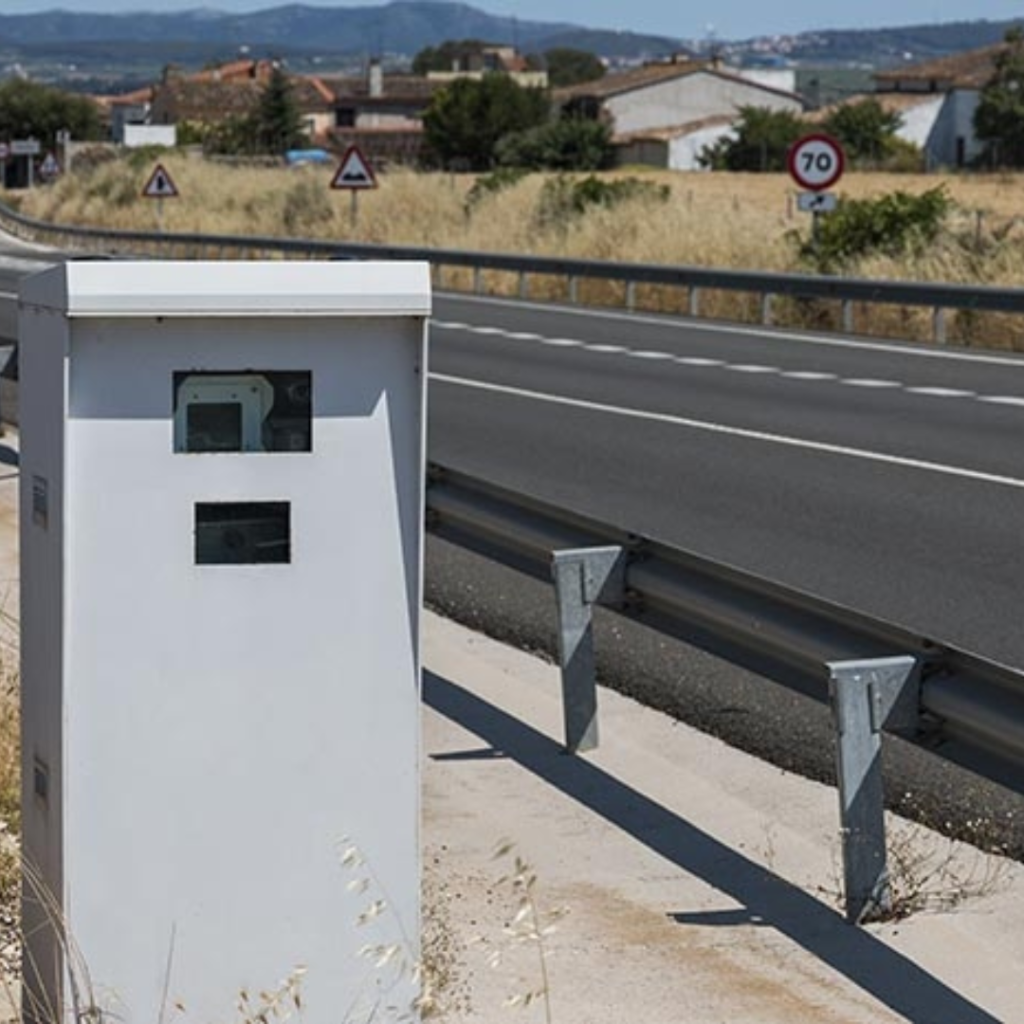
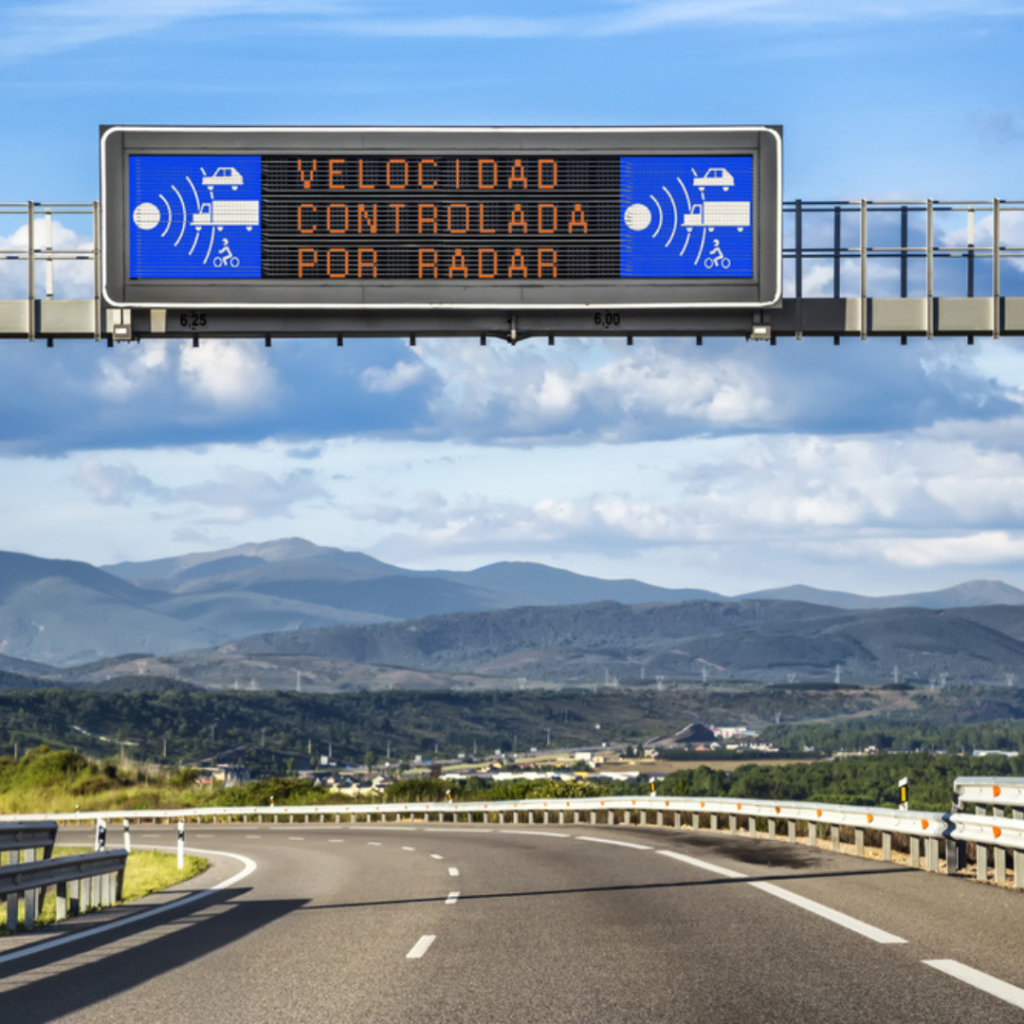
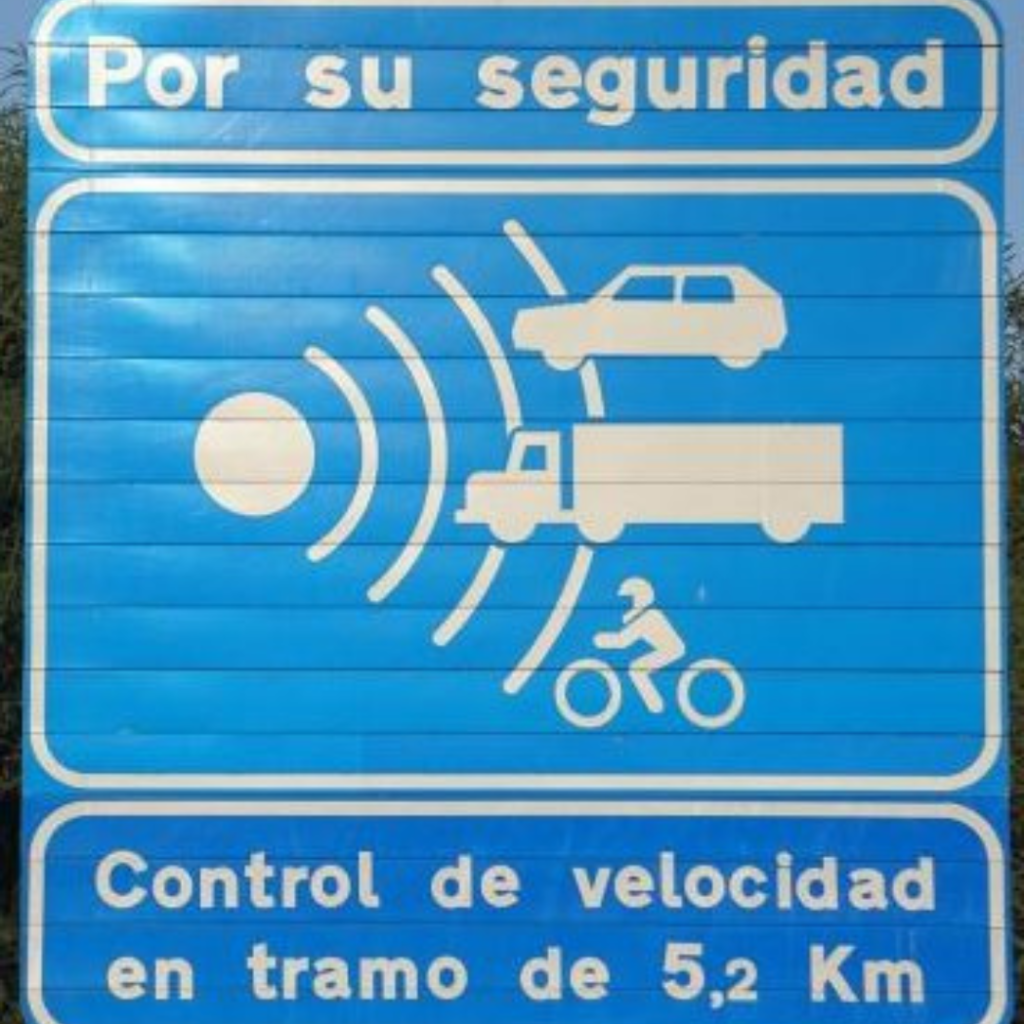
6. Are tolls common in Spain, and How do I pay them?
Spain has two types of highways: autovías (free highways) and autopistas (toll highways). While autovías are free to use, autopistas can be faster and less congested but come with a cost. On these toll roads, you’ll find peaje stations where you can pay using cash or credit/debit cards. Some tolls may also accept electronic payment via systems like VIA-T if you have a transponder.
Pro tip: If you want to take the scenic route, avoid both the highways and take the regional roads instead.
How to Avoid Toll Roads in Spain?
If you want to avoid tolls, use the “avoid tolls” option on your GPS. However, toll-free routes take longer yet they are more scenic.
7. Road Signs and Signals
Most road signs in Spain follow international standards, but it’s helpful to be familiar with a few key ones:
- “STOP” is universally used, but “Ceda el paso” means “Yield.”
- Speed cameras are commonly marked with signs saying “Control de Velocidad” and should be respected, as fines for speeding can be hefty.
- Zonas Peatonales are pedestrian zones where cars are not allowed, particularly in historical or city centre areas.
8. Parking in Spain
Parking can be tricky in Spain, especially in cities. There are some free parking areas, and that’s ideally what you want to look for to save some money on your Spain road trip. There are paid parking areas that can eat up your budget! But most importantly how do you distinguish between these parking zones? Here’s what you need to know:
- Blue Zones: Identified by blue-coloured lines/box. These are paid parking areas on the side of the road where you must display a ticket from a nearby metre. Parking is usually limited to a couple of hours.
- Green Zones or Orange Zones: You’ll notice a green-coloured or orange-coloured parking box/lines. These are paid parking areas often reserved for residents, though non-residents may park here for no longer than an hour during the daytime, at a much higher cost. Parking here at night is strictly only for residents in the area.
- Parking Garages: In many cities, parking garages (indicated by a “P” sign) are a convenient option. They are far more secure than roadside parking, but also more costly.
- No Parking Zones: Look for signs with a red circle and a diagonal line or curbside markings, especially yellow zig-zag bold lines.
- White zones or Free Parking Zones: If you are on a budget look for these free parking zones, they are available in all cities indicated by white lines or boxes.
Pro tip: Don’t be disheartened if the free parking looks full. Make a couple of rounds of the block, you’ll surely find a spot. It may take longer, but you save a lot of cost.
9. What’s the legal blood alcohol limit for drivers in Spain?
The legal blood alcohol limit is 0.5 mg/ml (lower for commercial drivers and those with less than two years of driving experience), and the police regularly conduct breathalyser tests. I am always extra cautious and I’d suggest not to drink and drive.
10. Is it easy to find fuel stations in Spain?
Fuel stations in Spain are easy to find, although when it comes to highways they are far apart. So always re-fuel timely. We made sure to refuel once my tank was left with 1/4th of fuel. Most stations are self-service, though some offer attended service. Payment can usually be made at the pump or inside the station. Diesel (gasoil) and unleaded petrol (gasolina sin plomo) are the most common. Be sure to know what your car needs.
Pro tip: The cost of fuel varies between cities, we noticed it was always cheaper by a couple of euros in rural areas or near smaller towns as compared to big cities like Sevilla, Malaga & Barcelona.
11. City Driving vs. Rural Roads
Driving in Spain varies drastically depending on the region and whether you are in an urban or rural area. Cities like Madrid and Barcelona can be congested with heavy traffic. Be prepared for aggressive drivers and honking if you’re too slow. In contrast, rural roads are winding and scenic but sometimes narrow and poorly lit. Drive cautiously, especially when navigating mountain passes or remote villages.
Pro tip: In cities like Granda, you are better off avoiding the narrow and uphill city centre drives. In such cases, choose to park at a location and explore on foot.
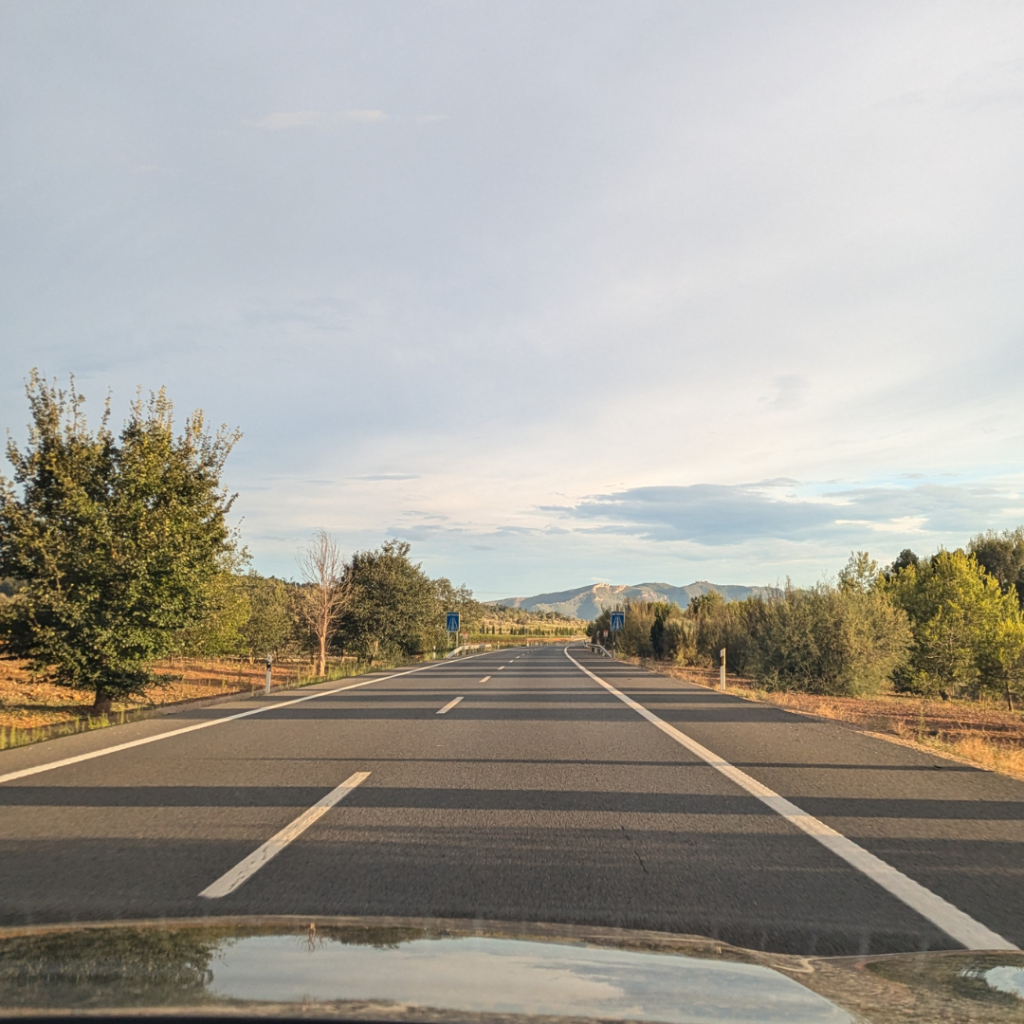
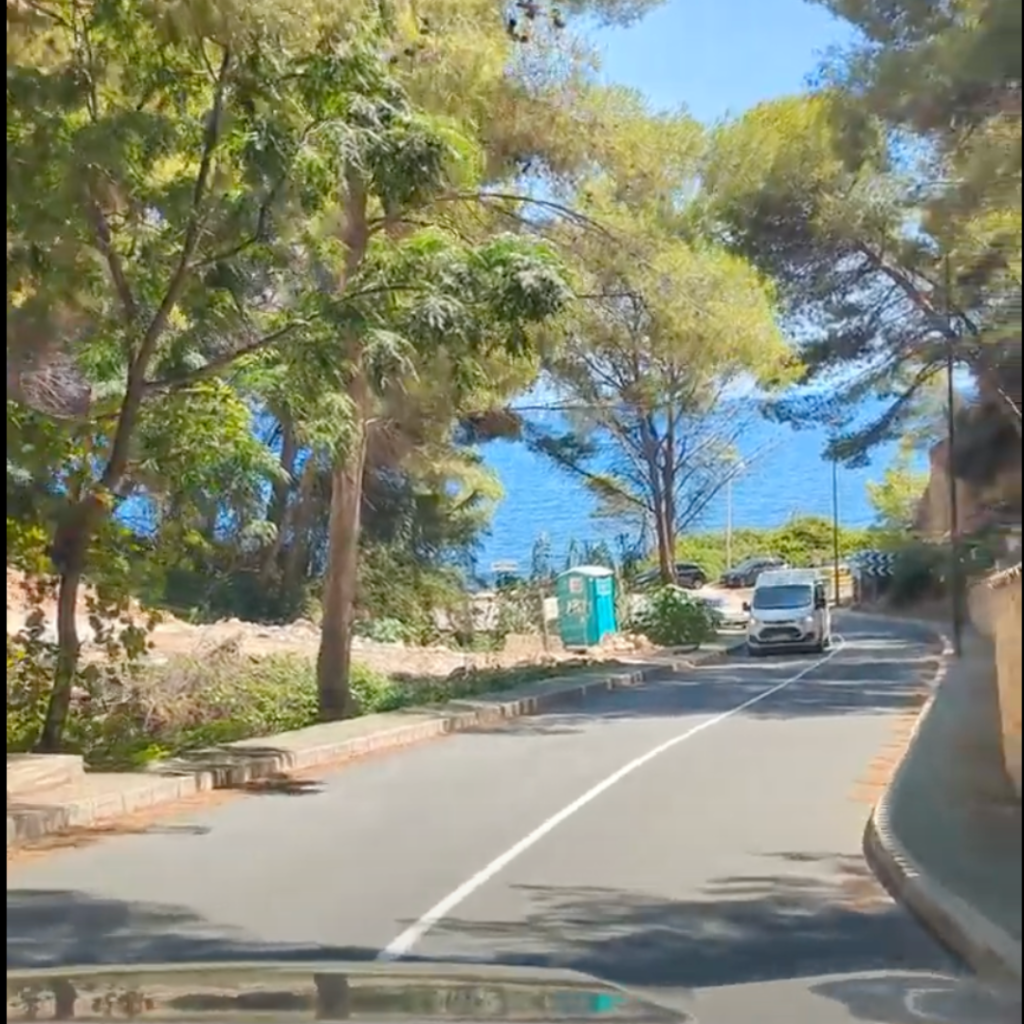
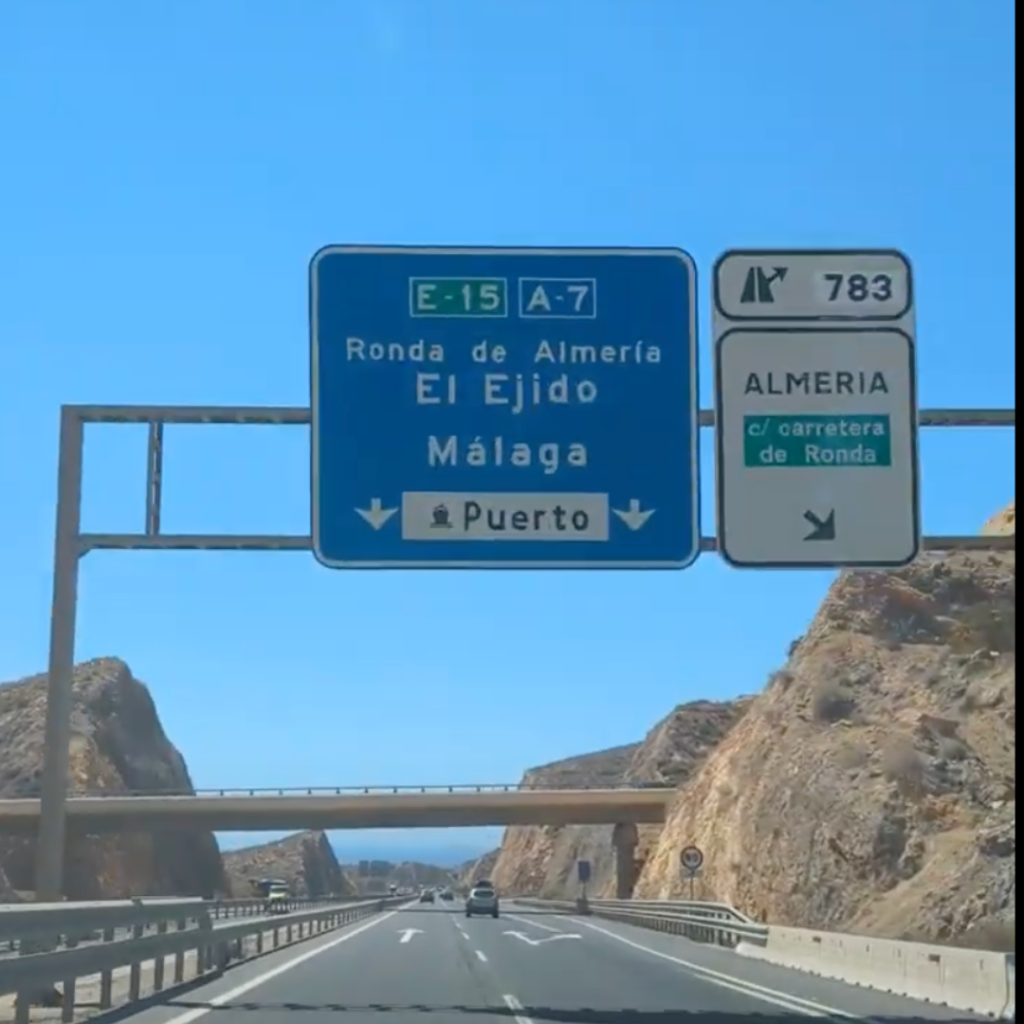
12. Roundabouts and Priority Rules
Roundabouts are extremely common across Spain, and if you’re not used to them, they can be confusing. Always give priority to vehicles already in the roundabout and Use your indicators when exiting the roundabout.
Spain also has some unusual priority rules. For example, vehicles travelling uphill have priority on narrow mountain roads. When overtaking a cyclist the speed limit should be the limit-20.
13. What should I do in case of an emergency or breakdown?
In case of an emergency, call 112, the pan-European emergency number, for police, ambulance, or fire services. If you rent a car, your rental company should provide emergency roadside assistance. If you’re driving your car, ensure your insurance covers breakdowns in Spain.
Spanish law requires you to carry a reflective vest and warning triangle in your car at all times. In case of a breakdown, wear the vest and place the triangle at least 50 metres behind the vehicle. In case you’ve rented the car, the company will provide you with the vest and triangle.